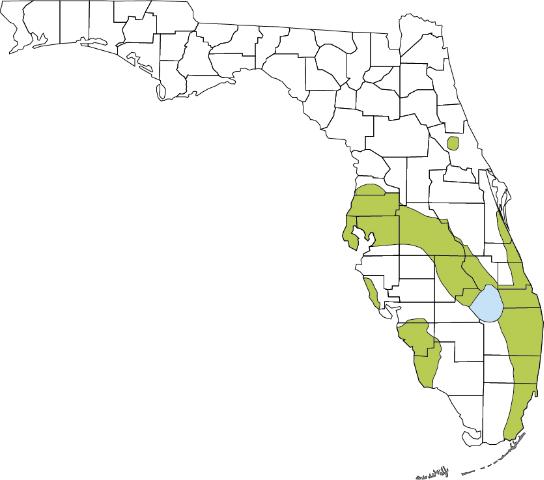Join UF/IFAS Extension Agent, Shannon Carnevale, to learn about cane toads and Cuban treefrogs.
Invasive species, like cane toads and Cuban treefrogs, are species that (a) are nonnative to a specified geographic area, (b) were introduced by humans (intentionally or unintentionally), and (c) does or can cause environmental or economic harm or harm to humans.
Cane toads, Rhinella marina, can:
- cause illness or death if eaten by pets
- cause skin or eye irritation to humans
Cuban treefrogs, Osteopilus septentrionalis, can:
- cause an allergy or asthmatic-like reaction in some people
- harm our ecosystems by eating our native treefrogs
- damage urban electrical systems and cause economic harm
Cane Toad Distribution Area
Cane toads are currently found in a large swath of SE Florida and Central Florida with smaller populations showing up and establishing in the Lee/Collier area, Sarasota, and a new population in the Deland, FL area. “As of 2017, they were established in much of the southern peninsula as far north as Tampa (Figure 1), and there have been several isolated sightings in northern Florida and one in southeast Georgia.” according to Dr. Steve Johnson, Associate Professor and Extension Specialist for UF/IFAS Wildlife Ecology and Conservation.

Cuban Treefrog Distribution Area
Cuban Treefrogs are likely established in all of Florida’s peninsular counties and are expanding west into the panhandle. “The ultimate distribution of Cuban treefrogs in Florida and the southeastern United States will likely be dictated by climate.” according to Dr. Steve Johnson, Associate Professor and Extension Specialist for UF/IFAS Wildlife Ecology and Conservation.
At this webinar, participants will learn:
- how to identify cane toads and their native lookalikes
- how to identify Cuban treefrogs and their native lookalikes
- the impact of invasive reptiles to Polk County and our ecosystems
- how to humanely euthanize and remove invasive amphibians from your community
This webinar will be offered twice, once during the workday as a lunch and learn and once in the evening. Please register for the session which fits into your schedule the best, not both.
Is this webinar appropriate for youth?
Adult learners are the intended audience for this webinar; however, if a parent or guardian participates alongside youth learners then the material might be okay. As a reminder, this webinar will discuss humane euthanization (albeit, not in a graphic way) so this topic may not be appropriate for all youth. Please use your discretion as a parent or guardian.
Event image photo credit: Brian Gratwicke / CC BY 2.0
UF/IFAS Extension is an Equal Opportunity Institution.
 0
0

